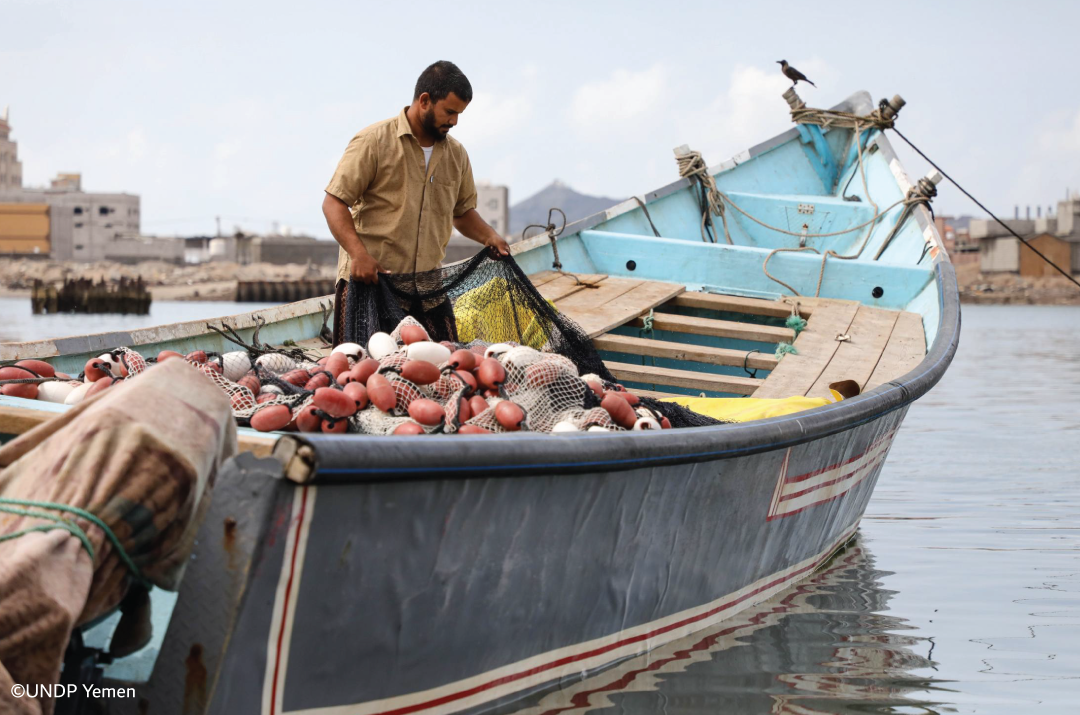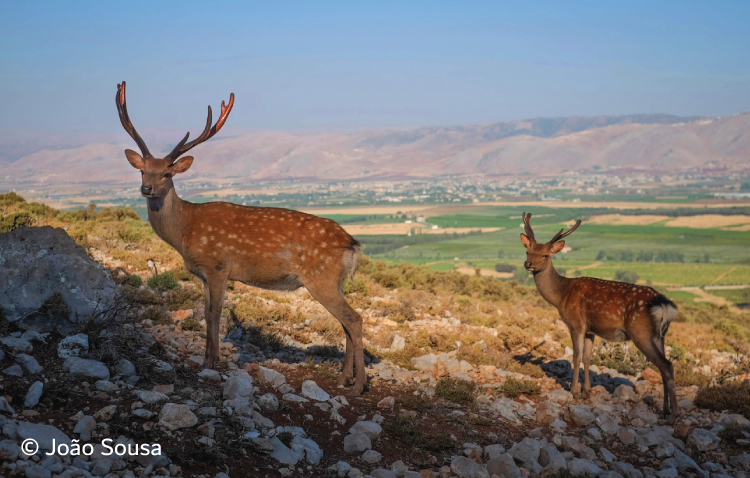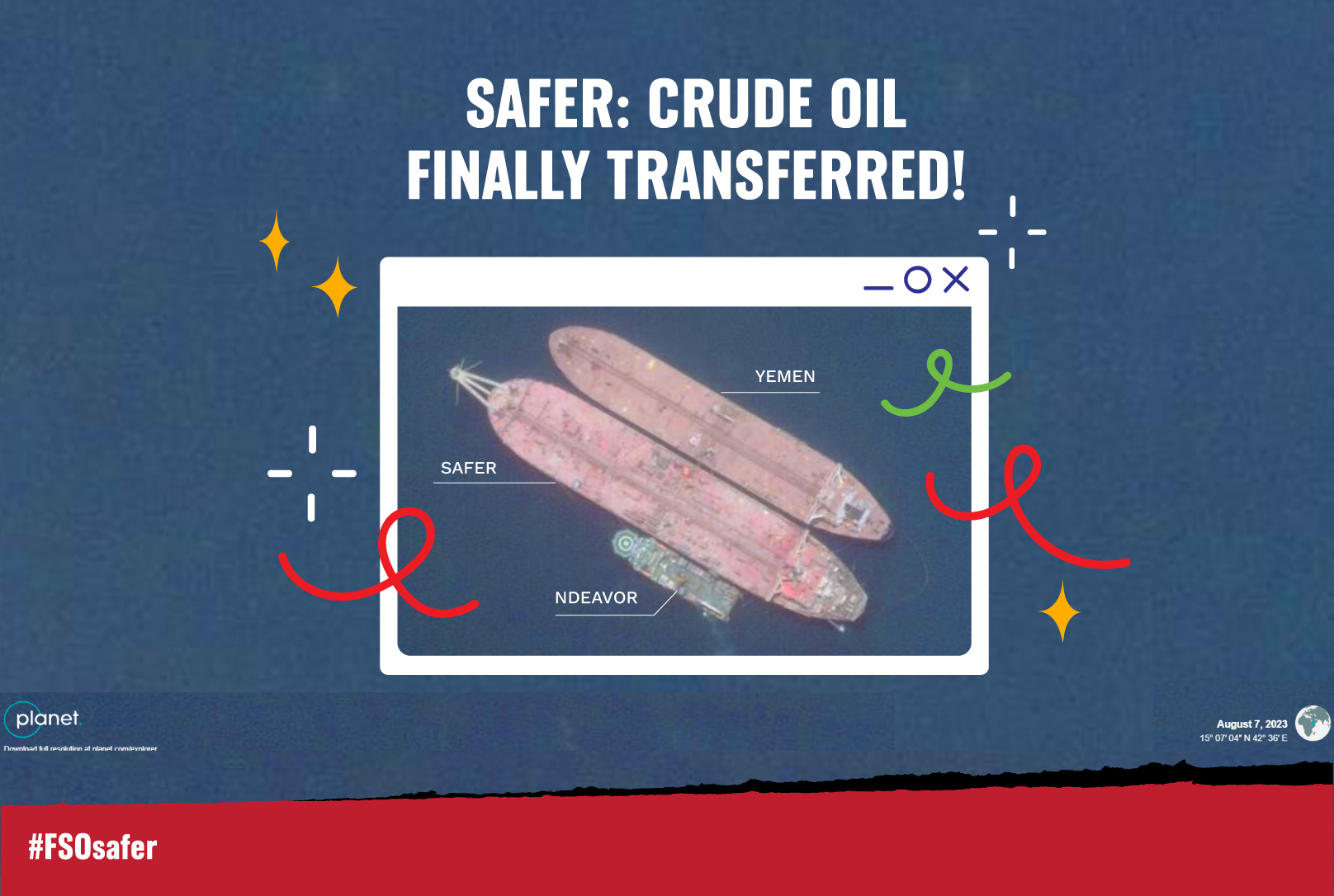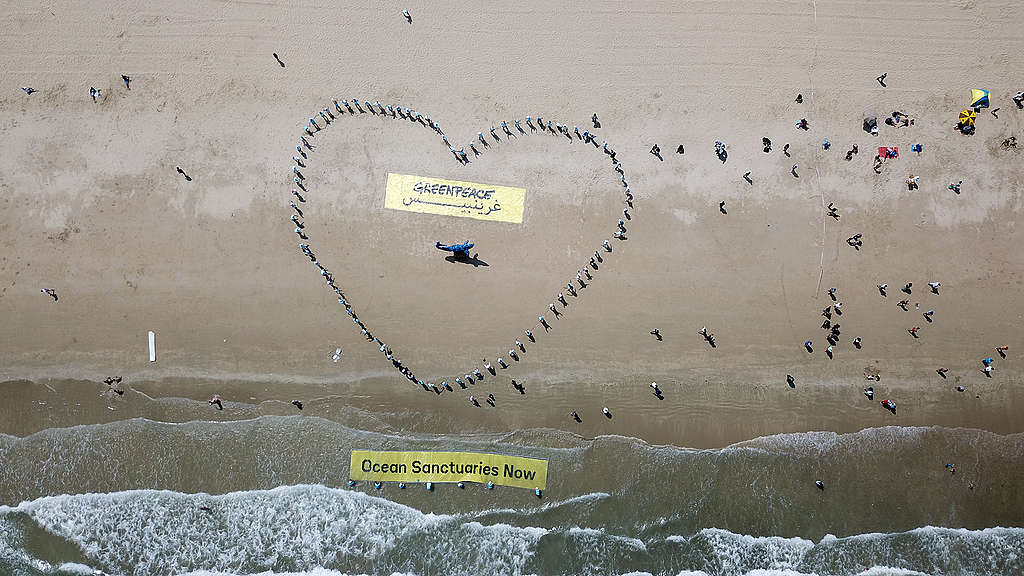
Tangier/ Morocco- 31 August: Part of the one year ‘Pole to Pole’ expedition to document and highlight the main threats facing the oceans and demanding “ocean sanctuaries”, Greenpeace Middle East and North Africa (MENA) revealed today an art installation made of 800 used plastic bottles representing a blue whale. This event was followed by a beach clean up on Tangier municipality beach.
Falastine Dwikat, campaigner at Greenpeace MENA said: ”With this art installation we are sending a message from the Mediterranean to the world calling for Ocean Sanctuaries to protect marine life from the many man-made dangers threatening it such as plastic pollution, overfishing and climate change.”
The art installation was created by the moroccan artist, Mokhtar Ghailan, with the help of Greenpeace’s volunteers. The “plastic whale” is 4 meters long and 3 meters high and took the artist 7 days to finalize.
Ghailan said:”Through this whale installation we are using art to highlight one of the biggest threats to our planet: plastic pollution. Art is a very powerful vector to reach out to a wider audience and help raising awareness on the challenges that our oceans are facing. Art has always been a great way to drive change”.
“Restoring the health of our oceans and seas is critical in preserving marine life, tackling the climate crisis, and sustaining the lives and livelihoods of millions of people who depend on them. A strong Global Ocean Treaty will pave the way for a network of sanctuaries that should cover at least 30% of the ocean’s surface to make them resilient to the worst man-made impacts according to scientists.” added Dwikat.
The art installation will be donated later to the Tangier municipality and will be placed on the public beach as landmark for ocean protection. The installation of the art piece was followed by a beach and underwater clean-up, which gathered more than 120 participants and divers.
“Our oceans are in crisis. Almost 1.8 million people have signed the petition calling on governments to sign a global ocean treaty and declare ocean sanctuaries. It is time for the world’s governments to listen to what people have to say. We want ocean sanctuaries now!” concluded Dwikat.
Notes to Editor:
Less than 3% of the oceans are protected
Greenpeace ships Esperanza and Arctic Sunrise are travelling from the Arctic to the Antarctic to research climate change, overfishing, plastic pollution, deep-sea mining and drilling. Greenpeace is immersed in a one-year expedition from pole to pole to document, along with a team of top-level scientists, the numerous threats facing the oceans: climate change, overfishing, plastic-pollution, deep-sea mining, and oil drilling. Currently, less than 3% of the oceans are protected; however, the science is clear that we must protect at least 30% of the oceans by 2030 to mitigate the worst man-made impacts.
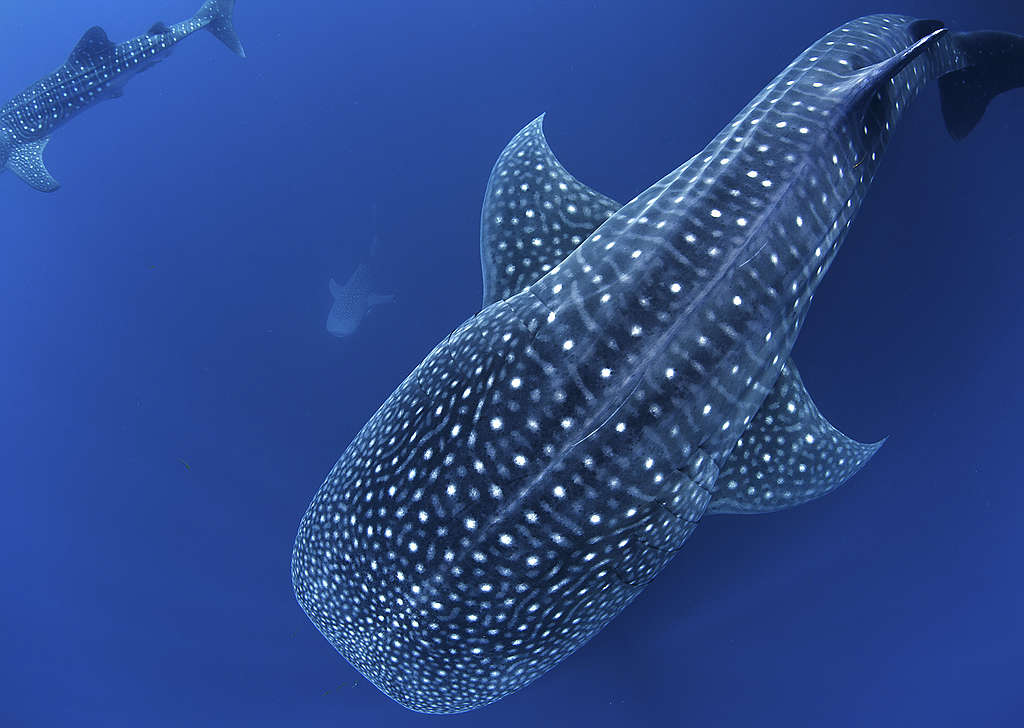
Now we have a chance to turn things around, by putting the most vulnerable and important parts of our oceans off-limits to destructive industries. Governments at the UN are starting work on a Global Ocean Treaty that will introduce laws to protect the oceans by creating sanctuaries.
Join Us
